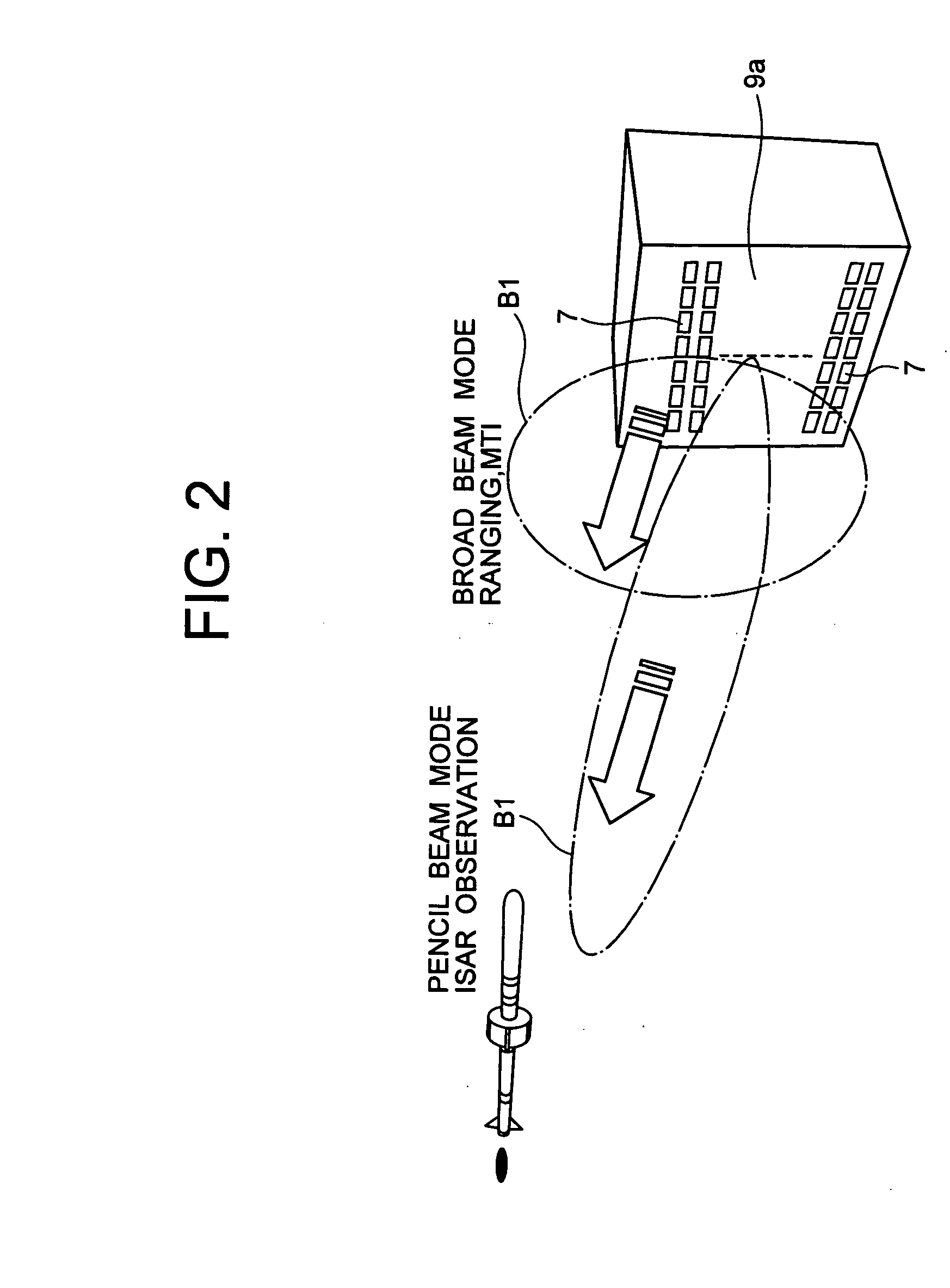Interferometer-type radar
- Summary
- Abstract
- Description
- Claims
- Application Information
AI Technical Summary
Benefits of technology
Problems solved by technology
Method used
Image
Examples
Embodiment Construction
[0034] Hereinafter, the present invention will be explained in detail based on the drawings.
[0035] As shown in FIG. 1, an interferometer-type radar according to the embodiment of the present invention includes: a transmitter T consisting of a plurality of transmitting modules; and a plurality of receivers R.
[0036] When viewed from the operational side, the interferometer-type radar according to the embodiment of the present invention shown in FIG. 1 has two operational modes, that is, a passive mode and an active mode. The active mode includes a ranging mode, an MTI mode, a high-accuracy ranging mode and an ISAR mode. Each mode will be explained.
[0037] The passive mode is an operational mode in which directions and radio signal intensity of all radio signal sources in a receivable frequency range within receiving antenna beams, such as signals of a meteorological radar of an aircraft, an FCS radar of a fighter, and a radar mounted on a satellite, are displayed without emitting ra...
PUM
 Login to View More
Login to View More Abstract
Description
Claims
Application Information
 Login to View More
Login to View More - R&D
- Intellectual Property
- Life Sciences
- Materials
- Tech Scout
- Unparalleled Data Quality
- Higher Quality Content
- 60% Fewer Hallucinations
Browse by: Latest US Patents, China's latest patents, Technical Efficacy Thesaurus, Application Domain, Technology Topic, Popular Technical Reports.
© 2025 PatSnap. All rights reserved.Legal|Privacy policy|Modern Slavery Act Transparency Statement|Sitemap|About US| Contact US: help@patsnap.com



